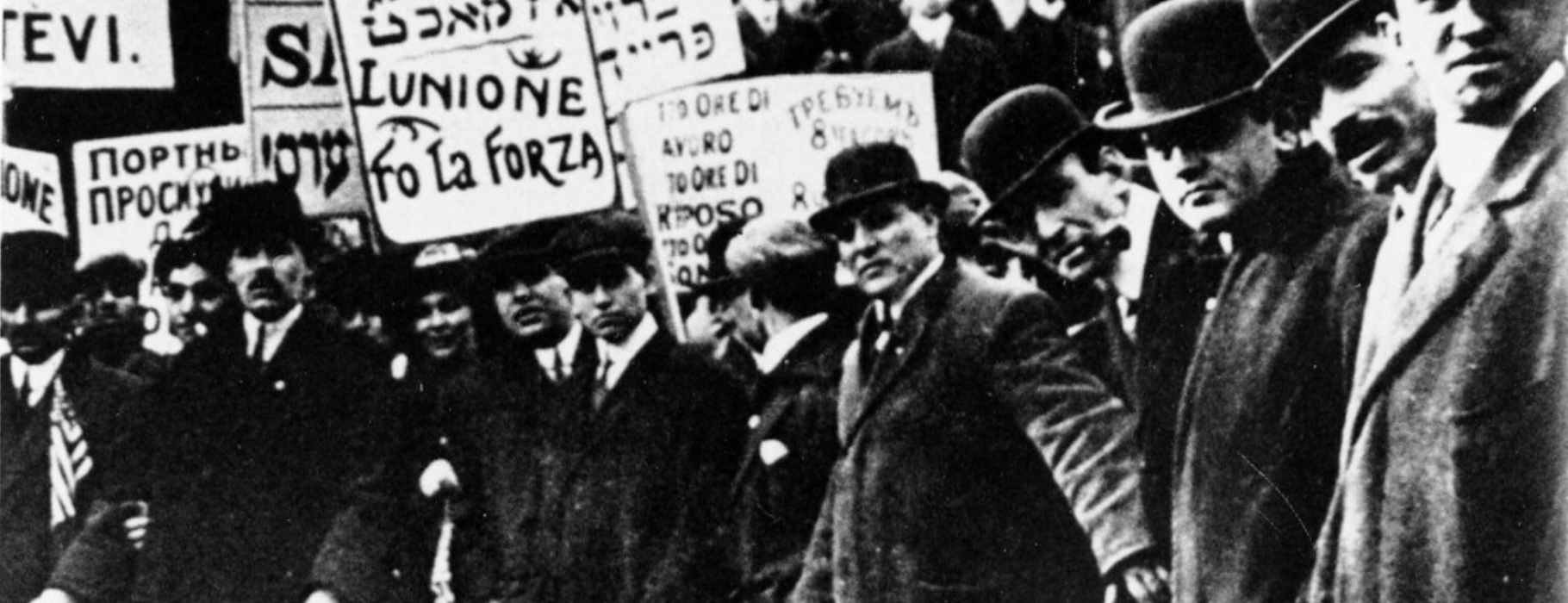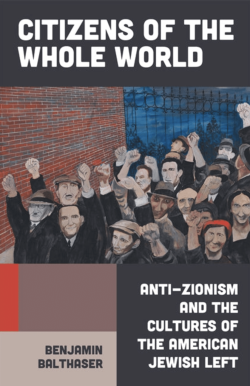US Jewish institutions often project a kind of bizarre exceptionalism onto Jewish anti-Zionists, as if they are either a modern deviation, totally detached from the collective consciousness of peoplehood, or part of an age-old problem of Jewish self-hate (autoantishemiut, literally self-hating Jew). Natan Sharansky, a Soviet refusenik known for his work fighting for Soviet Jewry’s right to emigrate to Israel, and Zionist historian Gil Troy called anti-Zionists the “Un-Jews.”1Sharansky, Natan and Gil Troy. “The Un-Jews: The Jewish attempt to cancel Israel and Jewish peoplehood.” Tablet Mag, June 16, 2021. https://www.tabletmag.com/sections/news/articles/the-un-jews-natan-sharansky. Mainline Jewish magazines like Tablet accuse anti-Zionist Jewish groups like Jewish Voice for Peace (JVP), the largest Jewish anti-Zionist organization in the world, of spreading antisemitic hate, while the Anti-Defamation League gives JVP its own page right alongside groups like the National Socialist Movement.2#JewishVoiceforPeace, Articles accusing JVP of antisemitism on Tablet Mag, https://www.tabletmag.com/tags/jewish-voice-for-peace. Jewish Voice for Peace, Anti-Defamation League, https://www.adl.org/resources/news/jewish-voice-peace. The American Jewish Committee, one of the largest Jewish advocacy organizations in the country, says that focusing on anti-Zionist Jews is “tokenization” and that “Zionism is an essential part of Jewish identity,” which reflexively indicts anti-Zionist Jews for supposedly lacking sufficient Jewishness.3“What You Need to Know about Anti-Zionist Jews,” American Jewish Committee, https://www.ajc.org/news/anti-zionist-jews.
The purpose of this framing is clear: to merge Zionist politics with Jewish identity so thoroughly that the consensus pro-Israel stance of contemporary US Jewish organizations appears transhistorical when, in reality, it is a rather recent aberration.
But as scholar Benjamin Balthaser’s new book Citizens of the Whole World: Anti-Zionism and the Cultures of the American Jewish Left points out, not only did radical internationalism inform modern Jewish identity, it has continued to do so with a sizable, and growing, number of US Jews. When we see thousands of Jews flooding into the streets to demand a ceasefire in Palestine, they aren’t breaking from what has been too quickly assumed to be a Jewish communal consensus; they are representing a long-established Jewish tradition of solidarity against oppression and showing that stilted nationalism offers no path toward liberation.
As Balthaser shows throughout his groundbreaking study, Jewish history has not been one that univocally envisioned peoplehood in the model of romantic European nationalism. Instead, a different revolutionary strain of Jewish self-conception ran directly from the Haskalah, the Jewish enlightenment, up until now. This strain understood Jewish identity through the kind of internationalism that diaspora community demands. Jewish organizations love touting their history in the labor, antiwar, and civil rights movement, such as their role in Yiddish newspapers like Fraye arbeṭer shṭime or in the legendary Ladies’ Garment Workers’ Union (an ancestor of today’s UNITE HERE)—at least, until you remind them what their ancestors’ opinion typically was about Palestine.
While the left was well represented among a number of immigrant groups, few such groups were rivaled by the sheer quantity of Jewish presence. By some estimates, Jews made up half of the Communist Party (as many as 5 to 10 percent of US Jews were members), which had its own Jewish section and Yiddish-language press. The radical wing of the labor movement was an overwhelmingly Jewish affair, as were historic antifascist movements, volunteers with the Abraham Lincoln Brigades, and allies of the Black freedom struggle. The Jewish history of oppression and the fact that their mobile history bred an inherent suspicion of states, capitalists, and politicians helped lead generations of Jews to define the US left. It wasn’t until the end of the Second World War, the formation of the state of Israel, and the eventual ubiquity of Zionism after the 1967 Six Day War, that it was even possible to feign the assumption that US Jews had fully assimilated into liberalism.
Balthaser is a seasoned Americanist, but that is not the only vantage point from which he is looking at US Jewish history. He comes from generations of radical Jewish activists: his grandparents, like many Jews, were Communist Party members, and he has spent his own adult life moving through socialist and anti-Zionist groups. While often framed as an unconventional sort of Jewish identity, it is actually rather traditional, particularly if we look back to the Jewish left of the 1930s, where Balthaser’s study begins. The US Jewish left was not actually an import from Eastern Europe, but rather organic to the Jewish experience of arriving at US shores, sweatshops, and tenements. Many had escaped increasingly violent persecution in the shtetl and joined the US project with both a sense of profound optimism and a willingness to leave behind the vestiges of the past. This led to a profound decrease in Judaism as the key marker of a Jewish identity, as many of these workers found that identity was more authentically expressed for them in cultural elements like the Yiddish language or in the kind of multiracial, multicultural class politics of a left forced to deal with the diversity of the US working class.
Balthaser traces how Jews in the 1930s and ’40s, primarily within the Communist and Socialist Parties, thought about their Jewishness. In doing so, Balthaser breaks with other historians. Tony Michaels remains one of the most respected scholars of the early Jewish left, and he suggests that radical Jews, at least shortly after the turn of the century, were ambivalent about their Jewish identity and looked forward to assimilating into the international proletariat. He says it was actually the Jewish Socialist Labour Bund, a Jewish particularist socialist organization that took shape in the Pale of Settlement, Eastern Europe, and Russia, that began to shift things. The Bund, according to Michaels, injected a kind of progressive Jewish nationalism into the left’s class politics and moved Jews toward preserving the vestiges of at least a secular Jewish life. Balthaser suggests this assumed Bundist influence might not be accurate, since the Bund never had a large foothold in the US Communist Party. The surrounding unions, like the International Ladies’ Garment Workers’ Union, were, however, Bundist in orientation rather than direct affiliation, given their deep Jewish attachments. “Despite differences with the Bund, Jewish Communists and socialists in the US constructed an ethnic particularism that echoed some of the Bund’s own cultural politics,” writes Balthaser. He turns directly to the sources for this, such as Alexander Bittlemen, a well-published Communist Party member and writer who asserted that Jewish nationalism was a necessary corrective to assimilation.
But this kind of national consciousness was in direct opposition to Zionism, which these workers saw as directly connected to fascism because of its roots in ethnic nationalism. For the Jewish left, Zionists were schemers, charlatans, and class collaborators, colluding with Western empire and capitalists for safety rather than for the working-class power they could generate by taking their own interests seriously. For example, Bittelmen agreed with the Palestine Communist Party of the time, which supported organizing the Jewish workers of the Yishuv in direct opposition to the “programmatic demand to turn Palestine into a Jewish state.” As Balthaser summarizes, Bittelmen and others believed that “if Jews have any role to play in Palestine, it would be to free Palestinians from colonialist rule.” This was not an aberration for these Jews; it was common sense.


